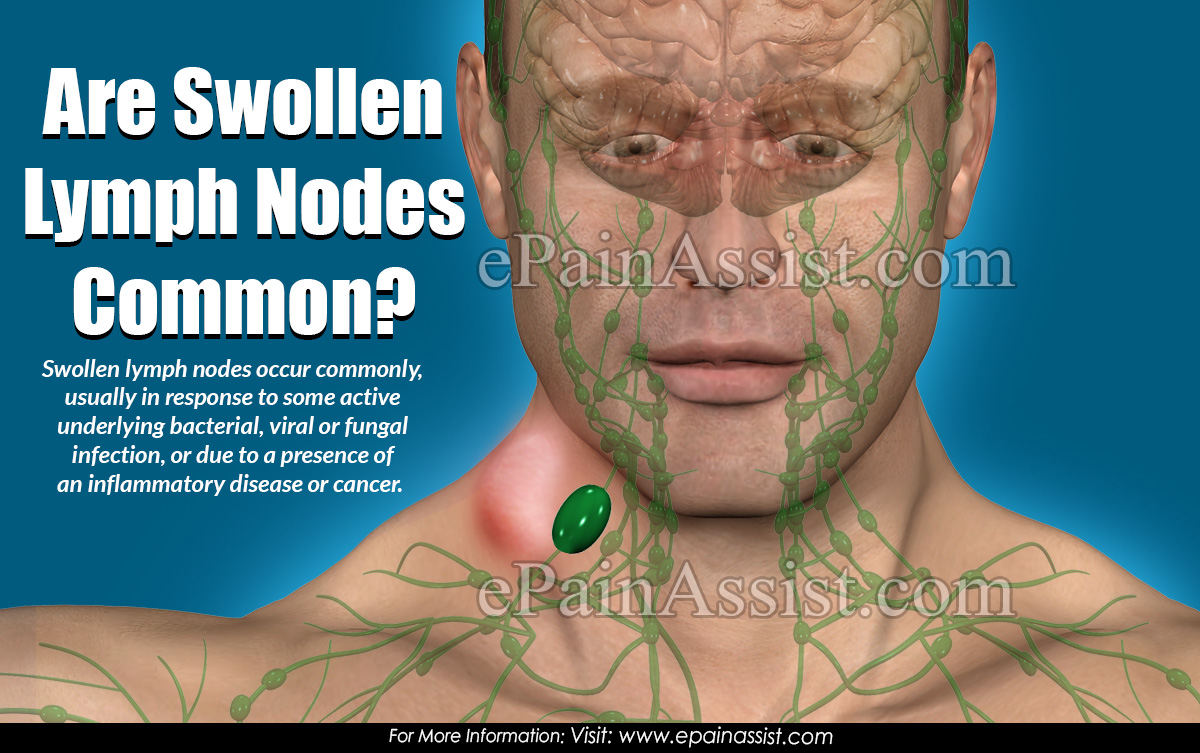Lymph nodes are an important and integral part of our immune system. Lymph nodes are connected to each other in chains. Lymph is a watery fluid that runs through the vessels called lymphatic vessels. Lymph nodes consists of a certain type of immune cells, mainly called lymphocytes. The role of these lymphocytes is to arrest and fight the viruses.

Are Swollen Lymph Nodes Common?
Swollen lymph nodes occur commonly, usually in response to some active underlying bacterial, viral or fungal infection, or due to a presence of an inflammatory disease or cancer. Once the underlying cause is treated, the swollen lymph nodes will subside. However, it is advisable to bring any lymph node enlargement to the notice of the healthcare practitioner, to rule out the chances of cancer.
Lymph nodes are present throughout the body, but they can only be visible or felt when they are swollen or enlarged. Lymph nodes represent a particular region in which they are located. Hence, each group of lymph nodes represents the abnormalities in that particular region of the body. For example, enlarged or swollen lymph nodes in head and neck region may be indicative of an infection of the ear, tooth, a viral illness or an upper respiratory tract infection. Similarly, the enlarged or swollen lymph node group in the groin may be suggesting an infection in the inguinal region or any organ around that region. When, the lymph nodes all over the body are swollen in general, it is known as a generalized lymphadenopathy. This may be not limiting to just an infection and can be a more serious affair.
Lymph nodes are present all through the body, some deep and some superficial. The areas where lymph nodes are easily visible or palpable if swollen are head and neck, axilla, arms, inguinal region or groin and behind the knees.
Many infections cause swollen lymph nodes, some common ones are strep throat, ear infections, tooth infections, upper respiratory tract infections, and more serious ones like HIV, lymphomas, lupus, etc. Common symptoms like pain, swelling and fever are noticed when lymph nodes are enlarged.
Causes of Swollen Lymph Nodes
Lymph nodes can get swollen due to many causes. This is known as lymphadenopathy or lymphadenitis. Generally, it can be said that the lymph nodes get swollen when they are actively fighting any infection caused by bacteria, viruses or fungi, or due to inflammation or cancer.
The commonest cause of swollen lymph nodes is a viral infection, the most common one being the common cold. Other viral infections include chicken pox, measles, herpes, HIV, and adenovirus etc.
Other infections like bacterial, fungal and parasitic are also responsible for enlarged lymph nodes. Bacterial infections like streptococci, staphylococci, TB, syphilis, STDs, are the commonest ones responsible for the enlargement of the lymph nodes.
Fungal infections like histoplasmosis and parasitic infection like toxoplasmosis are also commonly responsible for the enlargement of the lymph nodes.
Sometimes, other inflammatory diseases and cancers are responsible for the swelling of the lymph nodes. Rheumatoid arthritis and lupus are the commonest inflammatory diseases which can cause the lymph nodes to enlarge.
Many cancers are also related to the enlargement of the lymph nodes. Some cancers may start in the lymph nodes, like Hodgkin’s and non-Hodgkin’s lymphomas, whereas some may start in some other organ, but spread to the lymph nodes, like breast cancer.
Treatment For Swollen Lymph Nodes
As swollen lymph nodes are a result of some underlying cause, there is no defined treatment as such for the swollen lymph nodes. The responsible cause has to be treated, and in turn the swollen lymph nodes will be eliminated. For symptomatic relief like pain in the lymph node, some OTC medications can be taken. For relief, certain home remedies like warm compress can be used. For the infection that is responsible for the enlargement of the lymph nodes, the corresponding treatment should be used.
Also Read:
